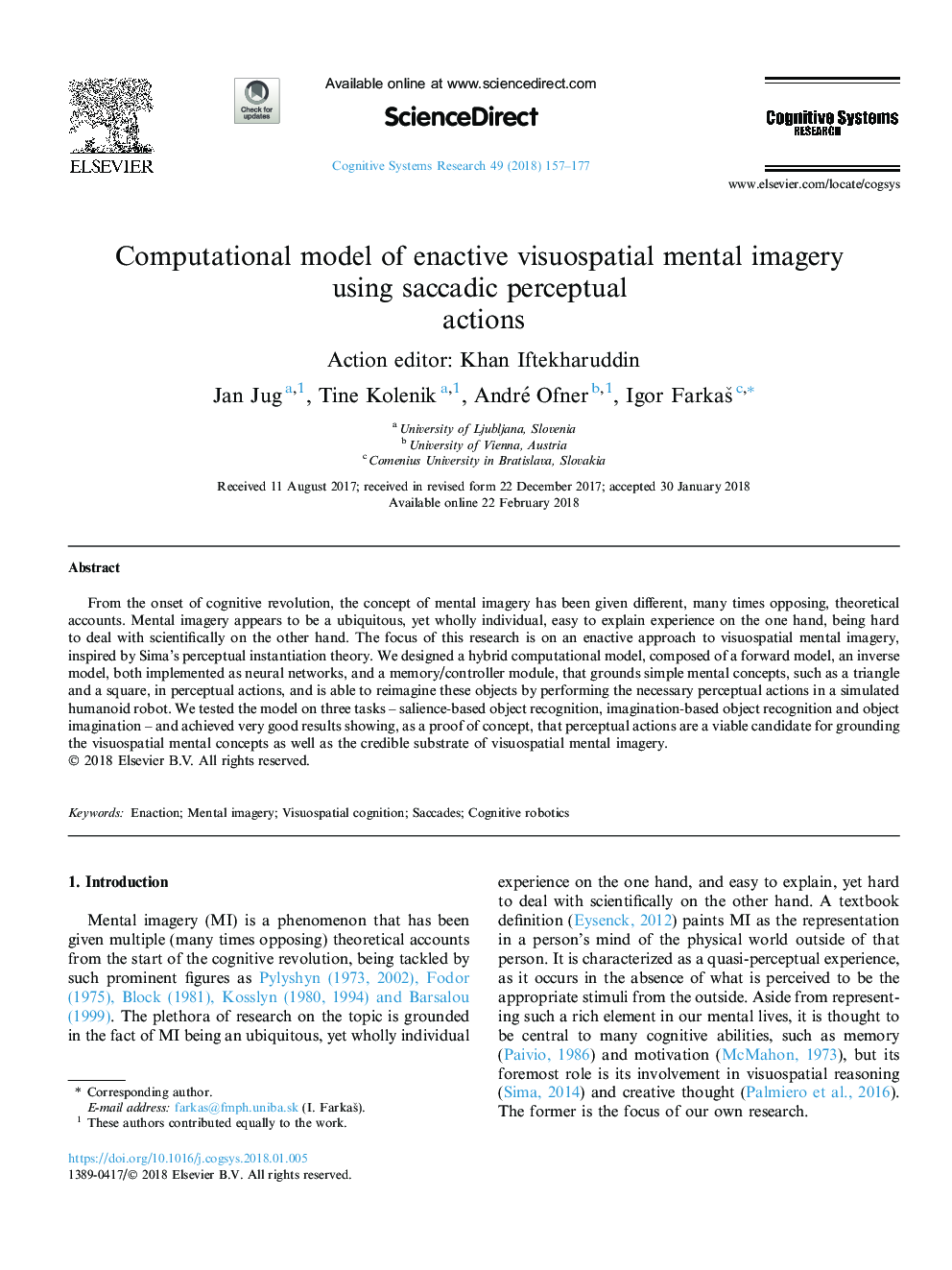| Article ID | Journal | Published Year | Pages | File Type |
|---|---|---|---|---|
| 6853805 | Cognitive Systems Research | 2018 | 21 Pages |
Abstract
From the onset of cognitive revolution, the concept of mental imagery has been given different, many times opposing, theoretical accounts. Mental imagery appears to be a ubiquitous, yet wholly individual, easy to explain experience on the one hand, being hard to deal with scientifically on the other hand. The focus of this research is on an enactive approach to visuospatial mental imagery, inspired by Sima's perceptual instantiation theory. We designed a hybrid computational model, composed of a forward model, an inverse model, both implemented as neural networks, and a memory/controller module, that grounds simple mental concepts, such as a triangle and a square, in perceptual actions, and is able to reimagine these objects by performing the necessary perceptual actions in a simulated humanoid robot. We tested the model on three tasks - salience-based object recognition, imagination-based object recognition and object imagination - and achieved very good results showing, as a proof of concept, that perceptual actions are a viable candidate for grounding the visuospatial mental concepts as well as the credible substrate of visuospatial mental imagery.
Related Topics
Physical Sciences and Engineering
Computer Science
Artificial Intelligence
Authors
Jan Jug, Tine Kolenik, André Ofner, Igor FarkaÅ¡,
